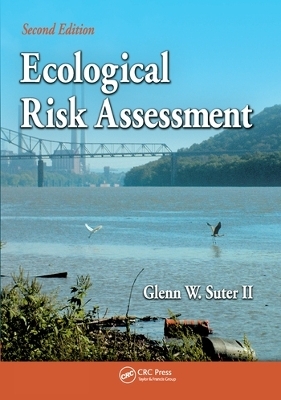
Ecological Risk Assessment
CRC Press (Verlag)
978-0-367-57776-6 (ISBN)
The definitive reference in its field, Ecological Risk Assessment, Second Edition details the latest advances in science and practice. In the fourteen years since the publication of the best-selling first edition, ecological risk assessment (ERA) has moved from the margins into the spotlight. It is now commonly applied to the regulation of chemicals, the remediation of contaminated sites, the monitoring of importation of exotic organisms, the management of watersheds, and other environmental management issues.
Delineating the processes for performing an ERA, the book begins by defining the field, then goes on to describe its relationship to other environmental assessment practices and its organizational framework. The book also includes a chapter on ecological epidemiology, which has previously been treated as a type of ERA, but is now recognized as a distinct practice in itself. It explores important concepts in the ERA process including probability, uncertainty, scale, mode of action and multiple causes.
Reflecting changes in the field, the book’s scope has been broadened to include discussions of the application of ERA to agents other than chemical contaminants. The multitude of illustrative figures provides a flavor for the diverse practice of ERA. The author has re-organized the material, presenting a unitary process of ERA that is applicable to various problems, scales, and mandates. He keeps the emphasis squarely on providing clear, scientifically sound, and unbiased technical advice on the risks from chemicals and chemical mixtures.
Glenn W. Suter II
Introduction to Ecological Risk Assessment. Defining the Field. Other Types of Assessments. Ecological Risk Assessment Frameworks. Ecological Epidemiology and Causal Analysis. Variability, Uncertainty, and Probability. Dimensions, Scales, and Levels of Organization. Modes and Mechanisms of Action. Mixed and Multiple Agents. Quality Assurance. Planning and Problem Formulation. Impetus and Mandate. Goals and Objectives. Management Options. Agents and Sources. Environmental Description. Exposure Scenarios. Assessment Endpoints. Conceptual Models. Analysis Plans. Analysis of Exposure. Source Identification and Characterization. Sampling, Analysis, and Assays. Mathematical Models of Chemical Transport and Fate. Exposure to Chemicals and Other Agents. Analysis of Effects. Exposure–Response Relationships. Testing. Biological Surveys. Organism-Level Extrapolation Models. Population Modeling. Ecosystem Effects Modeling. Risk Characterization. Criteria and Benchmarks. Integrating Exposure and Exposure–Response. Screening Characterization. Definitive Risk Characterization by Weighing the Evidence. Comparative Risk Characterization. Characterizing Variability, Uncertainty, and Incomplete Knowledge. Risk Management. Reporting and Communicating Ecological Risks. Decision Making and Ecological Risks. Integration of Human Health Risk Assessment. Integration of Risk, Law, Ethics, Economics, and Preferences. Monitoring the Results of Risk Management. The Future of Ecological Risk Assessment. Glossary. References. Index.
| Erscheinungsdatum | 01.07.2020 |
|---|---|
| Verlagsort | London |
| Sprache | englisch |
| Maße | 178 x 254 mm |
| Gewicht | 439 g |
| Themenwelt | Naturwissenschaften ► Geowissenschaften ► Geologie |
| Naturwissenschaften ► Geowissenschaften ► Geophysik | |
| Technik ► Umwelttechnik / Biotechnologie | |
| ISBN-10 | 0-367-57776-3 / 0367577763 |
| ISBN-13 | 978-0-367-57776-6 / 9780367577766 |
| Zustand | Neuware |
| Informationen gemäß Produktsicherheitsverordnung (GPSR) | |
| Haben Sie eine Frage zum Produkt? |
aus dem Bereich


